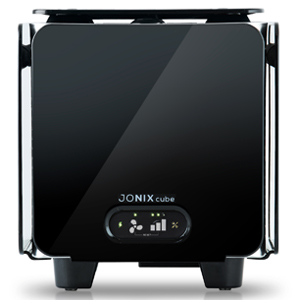How to make the air in your home healthier by choosing between a purifier and sanitiser
- Do you and your family members get sick often? Especially in your respiratory tract?
- Do you suffer from any allergies?
- When you are at home, especially during nighttime, do you have any difficulty breathing well?
- Is there a bad smell in the house? Do these odours persist?
- Are the spaces in your home small?
- Do you live in a busy area or a bustling industrial complex?
- Do any children or elderly live with you?
- Are there any smokers amongst your family members or your most frequent visitors?
- Does your home have any problems with humidity or mould? Even only in some specific rooms?
- Does your home usually have a lot of people in it? (Adults or children?)
If you answered yes to at least one of these questions, you most likely have tried to make the air in your home better, whereby better you mean cleaner and healthier, that is, without pungent odours, polluting substances (produced by furniture, paints, construction materials or smog from outside), viruses or bacteria, mould and allergenic substances (such as pollen during the spring season).
Currently on the market you can find devices to purify and devices to sanitise/disinfect the air in your home. Understanding the difference between one and the other can help you find the purifier that’s right for you, in order to get the best result at the most reasonable price.
What you will find in this article
Eliminate dust: air purifier with filters
Indoor purifiers are air scrubbing systems that operate via filtration, in other words, they contain filters which present different characteristics capable of trapping inside themselves various grain sizes of material. The most effective and efficient ones currently are HEPA filters (High-Efficiency Particulate Air filter) which can capture particles and fine dust up to 0.3 micrometres in size. HEPA filters have various degrees of effectiveness, based on the percentage of dust filtration, which ranges from H10 to H14, that is to say from 85% to 99.995%. In other words, filter air purifiers remove particles from the air and retain them in the device, which is why it is necessary to replace the filter often. It is also very important to properly clean the device, because the particles retained by the filter are a vehicle for microorganisms. And they become an excellent medium through which microorganisms can culture, promoting their development.
Air purifiers with filters are extremely useful, especially if you live in a very polluted area, because they work well on particulates, which they can capture, but have no effect on any other substances present in the air of your home, such as volatile substances ( VOCs, including benzene, toluene, formaldehyde) emitted from building materials, combustion processes, products for cleaning your house or the laundry. In addition, filter air purifiers can’t intervene on other unwanted guests such as viruses, bacteria and moulds present in the air of your home.
Remove dust and all other pollutants from the air of your home: ionising sanitisers
If your goal is to decontaminate and purify the air in your living spaces, eliminate up to 99.9% of all pollutants, from dust to VOCs, including viruses and moulds then a sanitiser is the right tool for the job. These devices, as a matter of fact, contain within them certified technologies capable of decomposing ALL polluting substances and transforming them into inert substances that are harmless to humans.
Compared to a device with filters, whose operation is more intuitive to understand, sanitising devices need a little more explanation, which is worth reading to understand how these tools can improve the quality of our air and life.
How do cold plasma ionisation devices (NTP) work?
Ionization is an all-natural air purification system that occurs in particular atmospheric conditions, such as during a thunderstorm. In these cases, the electric discharge of lightning releases electrically charged particles: electrons, ions, atoms and molecules which, when they collide with each other, produce oxidising species able to break down polluting substances present in the air. The air therefore becomes more sparkling and fresher and you can immediately perceive it because it is cleaner. It is possible to artificially recreate the ionisation phenomenon to purify, disinfect and sanitise environments and objects.
Cold plasma ionisation: the safest technology
There are various types of ionisers on the market, which differ according to the technology with which they produce ions. Jonix products use cold plasma technology (Non-Thermal Plasma – NTP) which is currently considered by the scientific community to be the safest and most effective technology, because it does not use chemicals or high temperatures to carry out its disinfecting properties.
NTP technology generates reactive particles that carry electrical charges, among which the most important are reactive oxygen species, which concentrate on the surface of cell membranes causing their destruction. The cold plasma ionisation therefore affects virus molecules, bacteria and mould making them inactive and breaks down all the other volatile polluting and harmful compounds into substances that are harmless to humans.
Sanitise your home in a safe, effective and guaranteed way: the Jonix Cube
Find out how to make the air of your home clean and healthy with the Jonix Cube, our certified device for domestic sanitisation: it has no side effects, can be used in environments where children and the elderly live, does not need filters, has low consumption energy (10watt) and sanitises rooms up to 85 square meters. And it is aesthetically pleasing to look at!



